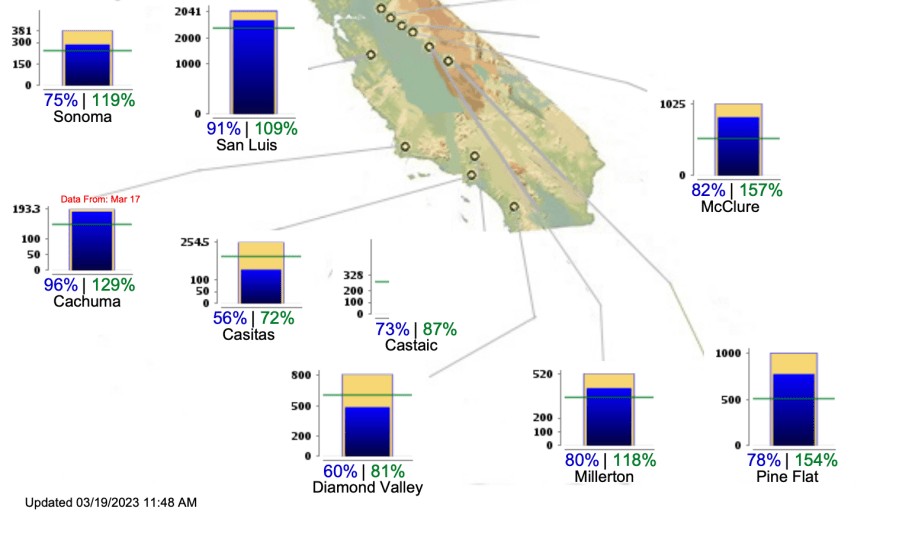
A powerful atmospheric river system threatens Northern California this week has brought welcome relief to several major reservoirs, boosting water levels after months of decline.
The weather system, accompanied by a bomb cyclone in the Pacific Northwest, delivered substantial rainfall across Northern California, leading to notable increases in reservoir water levels.
Lake Shasta, California's largest reservoir, experienced a rise of more than 2 feet since Monday. As of Friday morning, water levels reached 987.72 feet. While the reservoir currently stands at 56% capacity, this represents 105% of the average for this time of year, according to the California Department of Water Resources (DWR).
The most dramatic change occurred at Lake Sonoma in Sonoma County, where water levels surged by nearly 9 feet since Monday. The reservoir now sits at 62% capacity, marking 121% above its historical average. This substantial increase coincided with record-breaking rainfall at Sonoma County Airport.
Lake Oroville, the state's second-largest reservoir, also benefited from the atmospheric river. Water levels climbed approximately 4 feet from Monday's measurement of 755 feet. Despite this increase, the reservoir remains at 49% capacity, slightly below historical averages.
Other reservoirs seeing modest gains included Trinity Lake in northwest California and New Bullards Bar Reservoir in northeast California.
A DWR spokesperson noted that the timing of reservoir rises varies yearly based on weather patterns. The recent atmospheric river is expected to boost California's snowpack levels, despite much precipitation falling as rain. Early-season storms help prepare mountain soils to better retain spring and summer snowmelt.
The weather system continues to impact the region, with additional heavy rain and flooding expected through Saturday. The National Weather Service maintains multiple flood-related warnings across Northern California as the atmospheric river delivers its final round of precipitation.